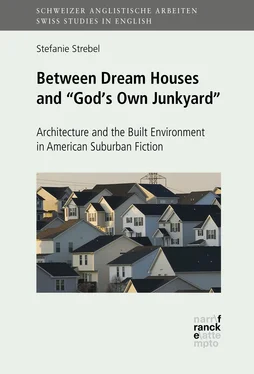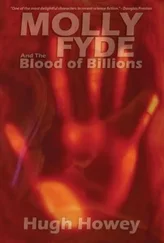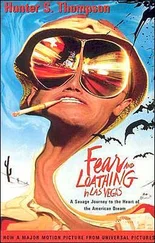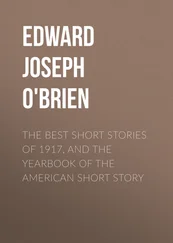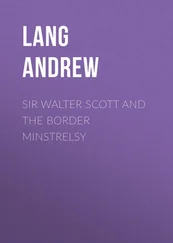The list of television shows set in the suburbs is seemingly endless and reaches back to the beginning of the format, when the traditional suburban sitcom family was born. I Love Lucy , one of the most popular and influential American sitcoms of all time, aired from 1951 to 1957 and featured the iconic Ricardo family. While the vast majority of the series is set in a New York City brownstone apartment building, the family eventually move to Westport, Connecticut – into “a quaint old early American,” as it is described in the episode “Lucy Wants to Move to the Country.” Rather ironically in the context of the current idea of suburbia as a figurative dead end, this is where the show comes to a close a few episodes later. Other popular sitcoms set in the outskirts at the time include The Adventures of Ozzie and Harriet (1952-1966) and Father Knows Best (1954-1960), and in 1957, in the same year that the final season of I Love Lucy aired, Leave It to Beaver (1957-1963) premiered, a sitcom narrated from the perspective of a young boy named Theodore “Beaver” Cleaver. Leave It to Beaver is concerned with the idealised American family, and therefore contributed greatly to the way in which suburbia was and continues to be perceived, not least in terms of idealised nostalgic housing in “an old-fashioned neighbourhood filled with classic pre-World War II suburban architecture, a sharp contrast to the many monotonous ‘little boxes made of ticky-tacky’ that came to define suburbia in the years preceding, during and after the series’ initial run” (Wlodarczyk 15). These early examples of television families moving to or being rooted in the urban periphery paved the way for numerous subsequent shows set in the same environment and targeting a similar audience, such as The Brady Bunch (1969-1974) and various other family-oriented sitcoms, a tradition which was only seriously challenged in the late 1980s and 1990s with shows like Seinfeld or Friends , which, instead of focusing on the suburban family, were centred around the urban individual.
Out of the more recent and critically acclaimed series, it is arguably The Sopranos (1999-2007), Desperate Housewives (2004-2012) and Weeds (2005-2012) that stand out the most. Their respective narratives are typically based on the superficial normality encountered in the American suburb, with dark secrets, mysteries, scandals, crime and intra- or interpersonal struggles lying hidden beneath this deceiving front of mediocrity. While it is the definition of a drama series that it deals with said issues, it is by no means a coincidence that the urban periphery has often become the setting of choice for Hollywood as well as independent directors and screenwriters, as the suburban setting allows their stories to evolve in a highly specific way and thus reach their full narrative potential. With regard to suburbia, the central assertion of these stories is that normality is not only deceiving – as normality does not exist –, but that it is in fact eerie and disquieting. The stereotypical hypocrisy of mediocrity encountered in the suburbs makes them the perfect setting to bring this idea across in a parodic manner, bringing to the surface the dark underbelly that is inherent to them.
A variety of animated series, such as The Simpsons (1989-present) or South Park (1997-present), use the suburbs as more than a simple backdrop, too; their respective plots, it can be argued, would not work in any other environment, so that suburbia becomes a crucial element of, or motif for, the storyline.2 The Simpsons is set in the outskirts of Springfield, a fictional town in a deliberately undefined location in the United States. The fact that the geographical surroundings of Springfield are strikingly flexible – depending on what the plot requires, the city can border on deserts, the ocean, mountains, lakes, meadows or forests – makes the setting highly relatable, as viewers can make it their own and match it against their personal experience of suburbia.3 South Park , as part of the metropolitan area of Denver, Colorado, in contrast, is bound to a specific geographical location, and typically exploits the boredom and triteness of the suburbs by making the sleepy mountain town a stage for the extraordinary, the supernatural and the bizarre.
While television shows set in the suburbs have had a long history and have been springing up like mushrooms since the postwar era, there was a noticeable rise in mainstream cinematic interest in this setting towards the end of the twentieth century. This does not mean, however, that the outskirts failed to receive their fair share of attention before. Apart from visually framing adaptations of novels or short stories such as The Man in the Gray Flannel Suit (1956), The Swimmer (1968) or Ordinary People (1980), the suburbs were often the setting of comedies, for instance The ‘Burbs (1989), but also of social dramas like Suburbia (1984), a film about runaway teenage punks squatting in an abandoned and decrepit tract house. Yet the sheer volume of mainstream Hollywood cinema focussing on suburban angst and receiving widespread critical acclaim especially shortly before the turn of the millennium is nonetheless striking. Films like Pleasantville (1998), The Truman Show (1998), Happiness (1998), American Beauty (1999), as well as Hollywood adaptations of novels such as The Ice Storm (1997), The Virgin Suicides (1999), and then later Little Children (2006) and Revolutionary Road (2008) have reinforced the position of suburbia on the map of mainstream cinema. This rising interest in suburban angst and anxiety is likely to have resulted from the fact that perceptions of sub- and peri-urban life continued to shift in the public eye and had become increasingly critical towards the end of the millennium, when there was a general atmosphere of anxiety in the population. All the above films portray suburbia in a highly negative light, focusing on escapism, despair, suicide, perversion, on deceptive normality as an eerie and disturbing suburban characteristic, as well as on people leading unconventional lives in houses that are the epitome of conventionality.
In literature, it appears as though the suburb is slightly more elusive than in the visual arts. With the exception of a handful of novelists, among whom John Updike and John Cheever are the most prominent, suburbia is not a setting or theme encountered consistently throughout the body of work of a given author. In contrast to the plethora and popularity of cinematic suburban representations at the turn of the millennium, there also appears to be no similarly obvious parallel development for preeminent literary publications. In addition, literary suburban narratives are often repetitive in topic and tone to an extent, which may be due to the stereotypical nature of the setting as well as its mediocrity and homogeneity. These characteristics certainly add to the lack of true diversity in suburban narratives, and this monotony is doubtlessly also the reason that the academic discourse on literary suburbia is far less pronounced than that of the urban, the cosmopolitan, or the multifaceted. Due to the city conventionally being the place where life truly happens, where the senses are stimulated, authors have historically been more inspired by the urban environment and have chosen it as a preferred primary backdrop for their narratives.
In spite of the perceived imbalance between novels set in the city and the suburbs, the distinctive characteristics commonly ascribed to the American outskirts have brought to life a new genre, the Suburban Gothic – a sub-genre of Gothic literature, as well as of Gothic film and television. These distinctive characteristics of suburbia refer to the feeling of eeriness that people sometimes experience when thinking of this space, which is likely to stem from the fact that the suburb is often portrayed as an architectural and social quasi-automaton. Interestingly, people often have this particular idea of suburbia without ever truly having been immersed in this environment, which demonstrates the power of popular culture, the arts and the media in shaping public opinion. Even though a large proportion of stories set in suburbia have a subtle Gothic undertone, the rise of a genre emphasising the Gothic aspect underlines people’s growing discomfort and unease towards the suburban sphere.
Читать дальше
